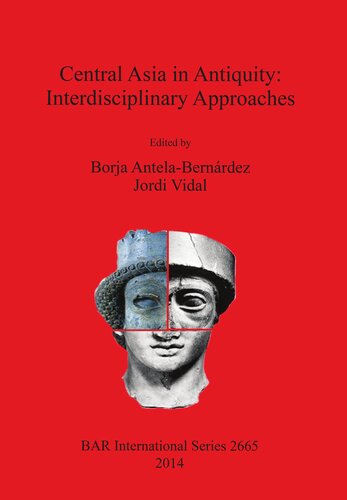

Most ebook files are in PDF format, so you can easily read them using various software such as Foxit Reader or directly on the Google Chrome browser.
Some ebook files are released by publishers in other formats such as .awz, .mobi, .epub, .fb2, etc. You may need to install specific software to read these formats on mobile/PC, such as Calibre.
Please read the tutorial at this link: https://ebookbell.com/faq
We offer FREE conversion to the popular formats you request; however, this may take some time. Therefore, right after payment, please email us, and we will try to provide the service as quickly as possible.
For some exceptional file formats or broken links (if any), please refrain from opening any disputes. Instead, email us first, and we will try to assist within a maximum of 6 hours.
EbookBell Team

4.7
56 reviewsCentral Asia is a wide subject of research in the archaeological and historical studies of the Ancient World. Scholars have usually focused on the complex and diverse questions that resulted from the analysis of the historical realities of this key region during Antiquity. The purpose of this book is to undertake an approach to the polymorphic and multiple aspects of Central Asia in Antiquity from several points of view. The starting point is the confidence in an interdisciplinary perspective as the mainway to understand the different aspects of the region in a very wide chronology: from the emergence of the cities and their relation with the nomadic populations, to the expansion of models and practices from Central Asia to the West during the campaignsand conquests led by Islam. Through subjects like warfare, gender studies and historiography, mainly from an archaeological point of view, the chapters analyze concrete sites like Mes Aynak, Uch Kulakh or Vardanzeh, but also models of interaction among the historical peoples living in Asia Central, like the Bactrians and the Persians, the Persians and Macedonians, the Greeks and the Indians, the Sassanid and the Romans, or even the Sassanid and the Steppe peoples. The result is a very clear example of the richness of starting an interdisciplinary dialogue with the intention of improving our perspectives and understandings of the complex relationships that, through Antiquity, the people living in Central Asia had developed and how scholars can, through archaeology and other related disciplines, approach the historical questions that arise in a close study of the subjects.